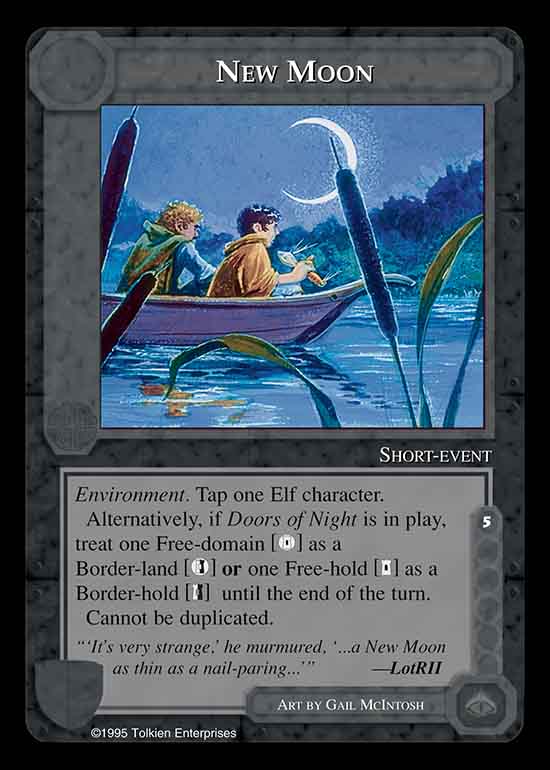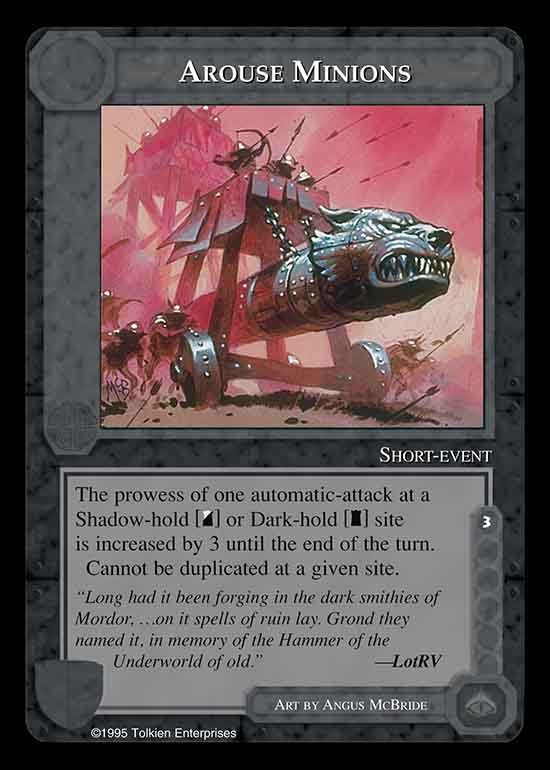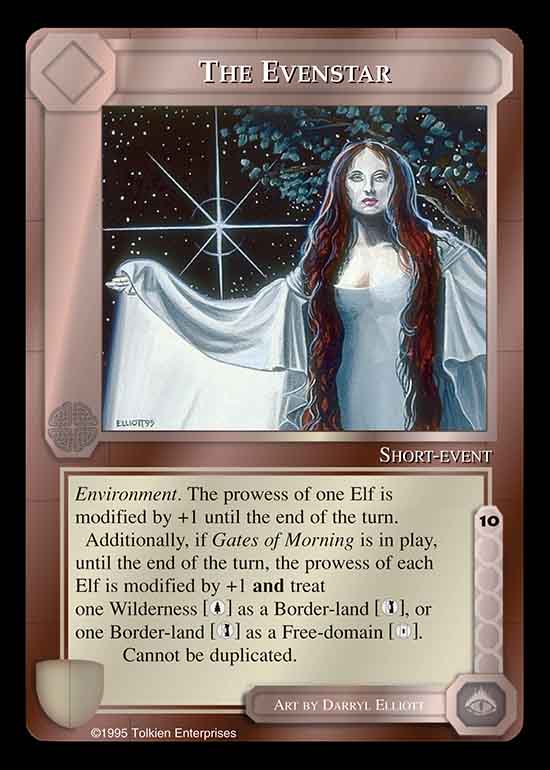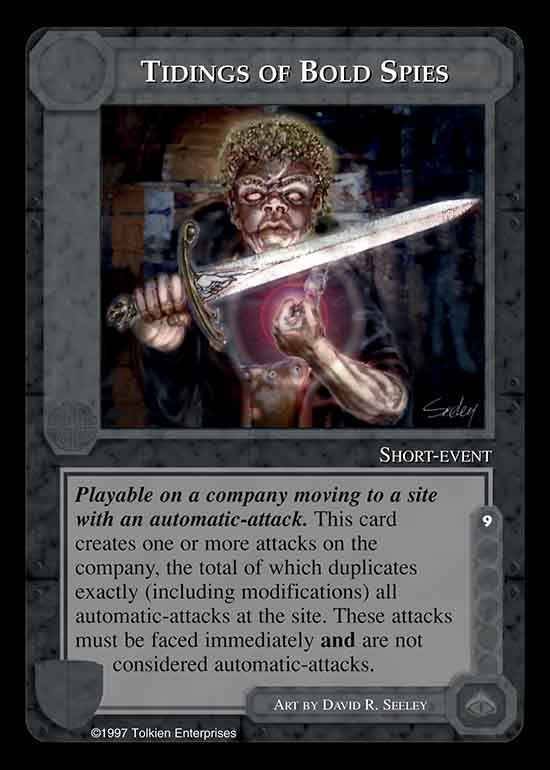Konrad Klar wrote: ↑Mon Nov 02, 2020 7:12 pm
CDavis7M wrote: ↑Mon Nov 02, 2020 5:30 pm
If you disagree, point to some rule that suggests otherwise. However, if there actually was a rule to support your position, you would have already mentioned it.
Set pieces of the game.
If an action caused by passive condition resolves it does no longer matters whether a card that caused the action is in play or not.
I cannot point to rules that (do not) check for presence ii play of a card that set an action caused by passive condition, because (AFAIK) they do not exist.
Only related rules I know check whether a card that set an action caused by passive condition is present in play when the action tries to resolve.
...There are rules that check for presence of a card after an effect triggered by a passive condition has already resolved. They are the rules on permanent-events and long-events which I posted above and discussed at length. An effect triggered by a passive condition is still an effect of the long/permanent event.
ALL EFFECTS of a long/permanent event, including effects triggered by passive conditions, only last while the corresponding card is in play. The rules are clear.
Your understanding of the game has no basis in the rules, contradicts the rules, and goes against ICE's rulings.
Here's how MECCG actually works: there is a difference between (A) an effect that changes the game state and (B) an that (i) modifies an attribute of a card, (ii) creates an on-going effect, or (iii) modifies a rule/allowance of the game.
No need to thank me.

(A) If an effect, triggered by passive condition or otherwise, is (A) an effect that changes the game state, then the effects are not un-done when the long/permanent event is discarded.
This is because un-doing the action would require a second, different actions. The rules on long/permanent events state that their effects last until the card is discarded, they do NOT state "new effects are created to undo previous actions caused by this card when discarded." An attack does not change the game state. No card in the game has been moved or has its position changed. An attack is merely an on-going effect -- if the Ahunt is discarded, the attack goes away.
For example, if long-winter taps a site, un-doing this tapping action would require a second untapping action. When long-winter is discarded, its effects cease. So it will no longer tap sites.
But discarding long-winter does not somehow declare untap actions for all of the sites that it tapped.
ICE wrote:From: ich...@spamblock.net (Ichabod)
Subject: Re: [MELE] Winter, Plague questions
Date: 1997/07/12
>4. For Long Winter's second effect of tapping sites, does the site untap
>after the Long Winter goes or does it basically mean that any site that is
>or becomes face-up during your and your opponent's turn is tapped and
>that's it? Just seems really rough.
The site does not untap after Long Winter goes. Any site that meets
the requirements of Long Winter will tap when it is revealed, or
when Long Winter is played.
(B) If an effect, triggered by passive condition or otherwise, is (B) an effect that (i) modifies an attribute of a card, (ii) creates an on-going effect, or (iii) modifies a rule/allowance of the game, then
the effect can easily be un-done by simply "forgetting" that the effect ever happened. This is because there has been no change to the game state.
Nothing needs to be done in order for the effect to cease.
(Bi) For example, The Moon is Dead is an effect that modifies the strikes and the prowess of an undead attack. It also duplicates Undead automatic-attacks. If The Moon is Dead is in play, then an Undead attack will be duplicated and both attacks get +1 strikes and +1 prowess. If The Moon is Dead is discarded because the 1st undead automatic attack is defeated, then the +1 strike and +1 prowess ceases and the duplicate attack cease. If there was an undead creature on-guard, they would no longer get the +1 strike and +1 prowess.
ICE wrote:From: ich...@cstone.net (Ichabod)
Subject: Re: [METW] The moon is dead question
Date: 1997/02/22
>This is probably an easy one, but it came up in a game
>last night.
>
>I play TMID. My opponent faces an undead auto-attack.
>(+1 prowess and attack doubled). What happens if he
>defeats the first attack (TMID is discarded), does he
>still have to face the second (even though TMID is gone)?
No.
(Bii) An attack is an ongoing effect. It merely creates one or more strikes that need to be resolved by characters in the target company. There is no change to the game state. So if an Ahunt Dragon creates an attack, and then its prowess is boosted, the player may discard the Ahunt with Marvels Told, thereby removing the Ahunt's attack from play. The attack does not need to be resolved.
ICE wrote:From: ich...@spamblock.cstone.net (Craig Ichabod O'Brien)
Subject: [MECCG] Rules Digest 94
Date: 1998/06/12
>1) If an Ahunt Dragon is played during the m/h phase and its attack is
>triggered by the company's movement, will removing the Ahunt Long-event
>with Marvels Told stop the attack?
Yes. When a long or permanent event is discarded by another card, it
immediately ceases to have an effect on play.
Note that the ICE ruling applies the rules on long-events, not the other rule on passive conditions for long/permanent events (discussed above) from 1996, long before June 1998.
Similarly, Bane of the Ithil-stone has an on-going effect that "
Automatically cancels any effects that causes a player to search through or look at any portion of a play deck or a discard pile outside of the normal sequence of play." There is no action triggered by a passive condition here, the effect simply negates declaration or resolution of any effect that causes a player to search/look at their deck/discard pile. Once Bane of the Ithil-stone is discarded, you just forget that it was ever in play. But you don't get to go back and re-search or re-look through your deck.
(Biii) Safe from the Shadow modifies a rule/allowance of the game during the End of Turn phase: "
Hero characters may store resources (items and events) during the end-of-turn phase as though it were their organization phase." No actions are triggered by this effect. If the event is discarded when the deck exhausts, then you just forget that it was in play.

----------
The CoE Netrep also misunderstood how long and permanent-events work. This misunderstanding is the basis for several incorrect CoE rulings.







